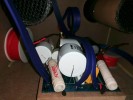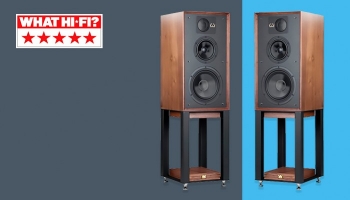Wharfedale LINTON review.
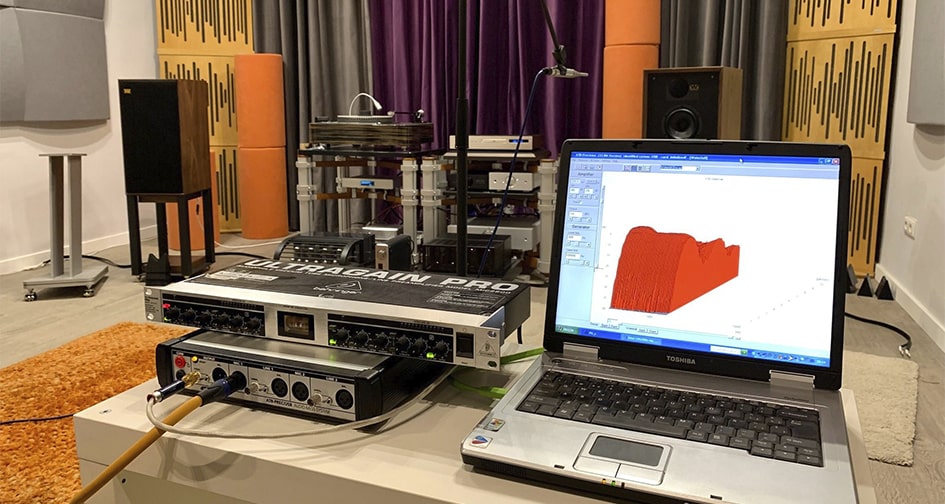
![]()
The Wharfedale LINTON represents one of the most iconic models in the brand's long history of loudspeakers. As we have already commented on several occasions, these boxes are a true prodigy, an outstanding speaker in terms of value for money. A very well crafted product that is indeed a best seller.
At Audiohum we have decided to upgrade them, making changes to the filter and wiring to improve the sound of these fantastic speakers even more. Of course we want to share the result with you.
To do this, first of all, in addition to the fact that we have been doing hearing tests for many months, we have carried out an analysis of the components that the LINTON includes from the factory, a sound test and we have also carried out measurements of distortion, SPL, impulse response , impedance and electrical phase as they come from series.
Once the modification is done, we will carry out these measurements and a sound test to see if the modification is worth it or not. Stay tuned to our social networks so you don't miss a detail.
Now, we go on to analyze the Wharfedale LINTON.
Design and components
Designed and built with today's materials, the Wharfedale LINTON has an old-school style. At around 56cm high, 33cm deep and 30cm wide, they're slightly larger than other monitors today, but they're not overly large, even in small listening rooms.
In large part, this is due to the natural wood grain, mahogany or walnut look that the LINTONs are finished with. The Wharfedale Linton stands also favor this feeling as they leave the speakers at a lower height than other models. A suitable height so that they can be heard in all their splendor.
Whether or not you appreciate the Linton aesthetic (we're all for it, if our opinion is anything to go by), it certainly has clear sonic benefits. A larger cabinet would have more generous bass and a wider baffle width would help give the mids a bit more solidity, supporting the output at lower frequencies. This effect, known as “baffling” occurs at a higher frequency in narrower speakers, so they sound less solid, even with electrical compensation applied to their filter network.
A larger chassis can also accommodate larger speakers. Low frequencies are handled by a 225mm driver, the same size as the woofer in the old Linton XP2s, but this time woven Kevlar has been used instead of paper in the construction of this cone. Just above it, in its own enclosure, we find a 15 cm Kevlar midrange speaker and a 25 mm fabric dome tweeter slightly inward.
The enclosures are made from high-density chipboard sandwiched between layers of MDF to create a combination that Wharfedale maintains can dissipate panel resonances better than MDF alone. The internal cushioning material chosen is long-haired synthetic wool.
Divider filters:
The filters are a 2nd order electrical design with components of acceptable quality, especially considering the PVP of these speakers. We find 3 iron core coils and one air core coil (the latter corresponds to the tweeter section). Ferrite core coils are cheaper and smaller than air core coils using the same section of copper wire but introduce more distortion than air coils. In the case of the coil that goes in series with the midrange speaker, I would have used an open-core voice coil without any hesitation.
There is a polypropylene capacitor in the tweeter section and all other capacitors are mylar or electrolytic. Mylar capacitors are inferior in quality to propylene but are still much better than electrolytics. Another very improvable point is the electrolytic capacitors, especially a 22uF one in series with the midrange speaker.
Resistors with all ceramics of 5W of very low quality, I would have mounted at least Mundorf MOX type resistors in the tweeter and mid section.
The wiring and the "fast-on" connectors that come with the box are of very poor quality, in fact the cable has greenish tones at the ends, a symptom of copper oxidation and indicative of a poor quality cable, especially when this oxidation has produced in a few months.
![]()
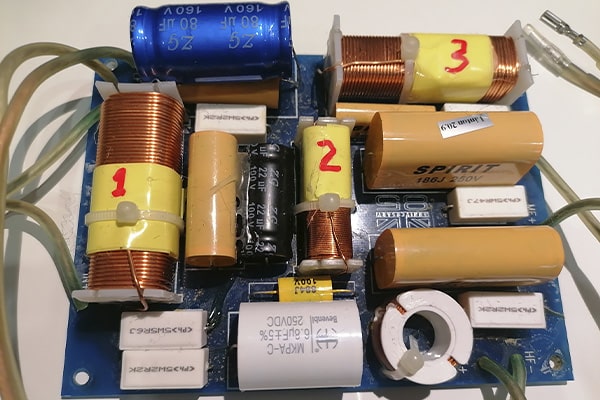
![]()
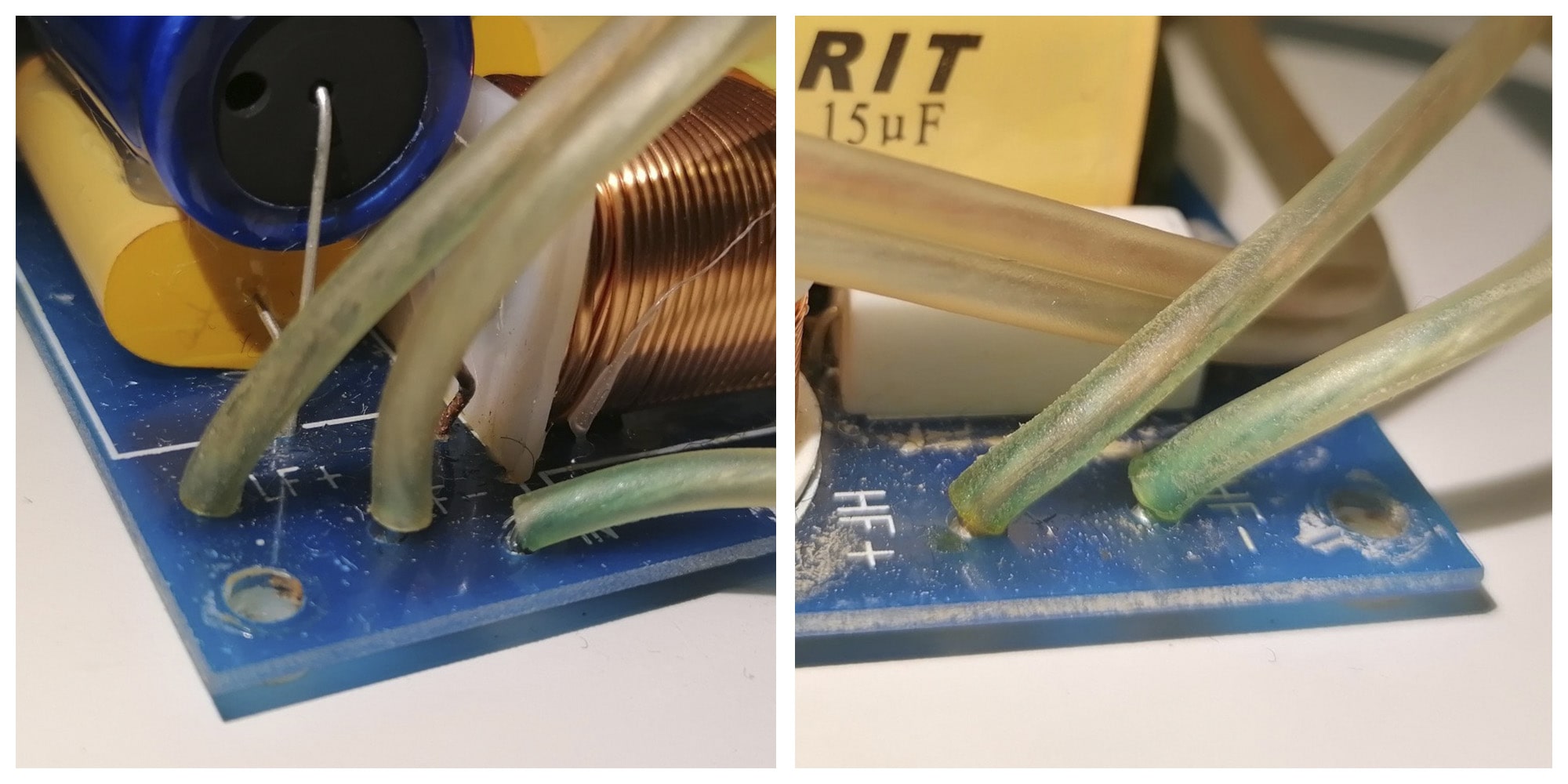
![]()
Compatibility and connections
The LINTONs have two rear bas-reflex ports on each unit. This model has been specifically designed for use with the grille on. Not only does it help keep a low visual profile, but the grilles actually enhance the sound because their shape improves interference from reflections off the edges of the chassis.
These speakers sound best when facing slightly towards the listener, with the Wharfedale logo on the outside corner of each speaker. Thus, the eccentric tweeters are located in the inner corner.
Measurements and analysis
The measurements have been made with a Kirchner Elektronik ATB Precision measurement system, an Earthworks M30 microphone and a Behringer Ultragain Pro microphone preamplifier. The distance from the microphone to the Lintons has been 90 centimeters and the height above the ground 95 centimeters.
Measurements have been made of frequency response and acoustic phase, impedance and electrical phase, distortion and impulsive response. We have made these measurements in our room, so they are affected by the interaction of the boxes with the room and they have been made with the grid removed. Except for impedance measurements, which are not affected, the rest can only be considered from 300hz, which is the area that is not affected by room interaction. In the impulse response we can consider a window of about 5 milliseconds as unaffected by reflections.
![]()

Frequency response and acoustic phase from 20hz to 20khz with a resolution of 500 points
This graph shows the response of the Lintons in the listening position with the microphone 90cm away. We can see that the zone from 300hz to 20khz (below 300hz we have indicated that the response is influenced by the room) has an impeccable graph that even improves somewhat with the grille on. We have seen measurements in which the response of the tweeter drops abruptly above 15khz, which does not occur in the model that we have analyzed.
![]()

![]()
Frequency response and acoustic phase from 300hz to 20khz with a resolution of 500 points
In this case the answer takes into account only from 300hz. The measurement still has 500 point resolution so in this case the measurement has more resolution by reducing the sample range.
![]()

Frequency response and acoustic phase from 300hz to 30khz with a resolution of 500 points and grid removed left channel
In this measurement it is perfectly appreciated that the response drop in this Linton unit begins to occur from about 18khz being about -3db at 20khz. This is a measurement made with the grille removed.
![]()

Acoustic frequency and phase response from 300hz to 30khz with a resolution of 500 points and grid set to the left channel
![]()

Acoustic frequency and phase response from 300hz to 30khz with a resolution of 500 points comparing response with grid on (red) and grid off (blue) left channel
![]()

Distortion from 200hz to 16khz with a resolution of 250 points. The peak at 280hz is due to the room, so we must take into account the response above 300hz and the peak that occurs around 1600hz certainly stands out.
![]()

Impulse response
In the impulsive response we can see that there is a first peak in the negative zone corresponding to the tweeter, which links entering the positive zone with a second peak in the negative zone that corresponds to the midrange speaker that links with the peak of greater magnitude in the positive zone that corresponds to the woofer. There are no discontinuities, which indicates a good integration of the 3 drivers and we deduce that both the tweeter and the midrange are connected with reversed polarity while the woofer is connected with non-reversed polarity.
![]()
Interesting links:
https://www.erinsaudiocorner.com/loudspeakers/wharfedale_linton_85/
https://www.stereophile.com/content/wharfedale-linton-heritage-loudspeaker-measurements
Related products
WHARFEDALE Linton with stands

WHARFEDALE Linton
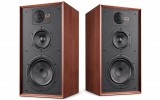
FILTER MODIFICATION KIT - Wharfedale LINTON
